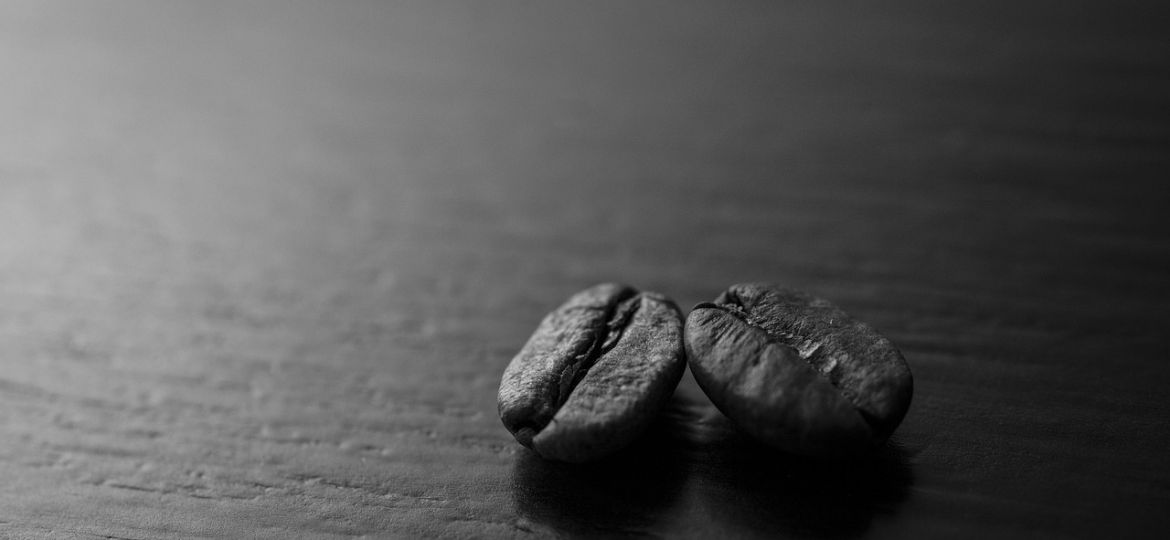
Black and white coffee beans are two distinct categories within the vast world of coffee, each with unique characteristics that influence their taste, aroma, and how they are enjoyed by coffee aficionados globally. The differentiation between these beans lies not in their origin but in their roasting processes, which significantly affect their flavor profiles and physical properties.
Understanding these differences is crucial for appreciating the diverse palette of flavors offered by coffee and highlights the beverage’s cultural significance across various societies.
What Are Black Coffee Beans?
Black coffee beans are the traditional backbone of coffee culture, known for their rich, bold flavors. These beans undergo a roasting process at temperatures ranging from 450 to 480 degrees Fahrenheit, significantly altering their chemical and physical structure.
This process not only darkens the beans but also enhances their oils and aromatics, producing the classic coffee taste with varying degrees of bitterness, acidity, and complexity.
What Are White Coffee Beans?
Contrastingly, white coffee beans are subjected to a much lighter roasting process at temperatures around 325 degrees Fahrenheit. This method halts the roasting before the first crack, a stage in bean roasting that signifies a light roast. As a result, white coffee beans retain a lighter color, a denser structure, and a distinctively different flavor profile compared to their black counterparts. They exhibit a milder, nuttier taste, often with floral or fruity undertones, and are harder and denser due to the shorter roasting period.
Read more about Folgers Country Roast Coffee.
Key Differences Between Black and White Coffee Beans
The primary distinctions between black and white coffee beans lie in their roasting temperature and time, appearance, texture, flavor profile, and caffeine content. Black coffee beans are roasted at higher temperatures for longer periods, resulting in a dark color, porous texture, and a flavor profile marked by richness and bitterness. In contrast, white coffee beans are roasted at lower temperatures for shorter times, maintaining a lighter color, dense texture, and a flavor characterized by mild, nutty notes.
Interestingly, the caffeine content in white coffee is slightly higher than in black coffee due to the lesser extent of roasting, though this difference is minimal and often imperceptible to the average consumer.
Flavor Profiles
The flavor profile of coffee beans is significantly influenced by their roasting process. Black coffee beans, roasted at higher temperatures, develop a rich, full-bodied flavor characterized by notes of chocolate, caramel, and sometimes a hint of smokiness, depending on the extent of the roast.
This process also introduces a level of bitterness and acidity that is appreciated by many coffee enthusiasts for its depth and complexity. In contrast, white coffee beans, roasted at lower temperatures, offer a lighter, more delicate flavor profile. These beans retain a natural sweetness and exhibit nutty, floral, or fruity notes, making them less bitter and more approachable for those sensitive to strong flavors.
The distinct roasting techniques highlight the beans’ inherent qualities and create a diverse spectrum of tastes that cater to a wide range of palates.
Read more about Folgers Special Roast Coffee.
Health Benefits and Considerations
The roasting level of coffee beans also affects their health benefits and considerations, particularly in terms of antioxidants content, acidity, and caffeine levels. Lightly roasted white coffee beans generally contain higher levels of chlorogenic acid, an antioxidant known for its potential to reduce inflammation and blood pressure.
However, the acidity of coffee, often perceived as a bright, tangy flavor characteristic, can be higher in lighter roasts, potentially affecting individuals with sensitive stomachs. Conversely, the extended roasting process of black coffee beans may reduce some antioxidant levels but also decreases the beans’ acidity, making it slightly easier on the digestive system for some people.
Regarding caffeine, the difference is minimal, with white coffee beans having a slightly higher caffeine content than black coffee beans due to less degradation of caffeine molecules at lower roasting temperatures. Yet, for most consumers, this difference in caffeine levels is barely noticeable.
Brewing Methods and Preparation
Choosing the appropriate brewing method can significantly impact the enjoyment of both black and white coffee beans. Black coffee beans are versatile and can be brewed using a variety of methods, from traditional drip coffee makers to espresso machines, depending on the desired intensity and flavor extraction.
The key to brewing a great cup of black coffee is to match the grind size to the brewing method, ensuring optimal extraction and flavor balance. For white coffee beans, due to their denser and harder nature, an espresso machine or a method that applies pressure, like an Aeropress, is recommended to extract the full range of flavors.
Pre-ground white coffee beans are often advised since their density can challenge home grinders. When brewing at home, experimenting with different water temperatures and brew times can help in achieving the perfect cup, with cooler water and shorter brew times generally favoring the delicate flavors of white coffee.
Read more about Colombian Coffee Vs Classic Roast.
Cultural and Historical Context
The origins of black and white coffee beans trace back to distinct cultural and historical contexts, reflecting the rich tapestry of coffee’s global significance. Black coffee beans, with their deep, robust flavors, have been a cornerstone of coffee culture since its inception in Ethiopia and subsequent spread across the Arabian Peninsula in the 15th century.
This traditional roast has been embraced by various cultures, becoming a symbol of hospitality and community in many regions. White coffee beans, on the other hand, offer a newer variation in the coffee spectrum, with some claims pointing to Yemen and Lebanon as places of origin. Each type carries its unique story, contributing to the diverse world of coffee and its cultural resonance across different societies.
Choosing Between Black and White Coffee Beans
When selecting between black and white coffee beans, consider flavor preferences and the coffee drinking experience you seek. Black coffee beans are ideal for those who appreciate a bold, intense flavor with a hint of bitterness. In contrast, white coffee beans suit those looking for a lighter, smoother cup with nuanced flavors. For the adventurous palate, white coffee offers a unique taste profile, while traditionalists might lean towards the rich depths of black coffee.
Read more about Cuban Roast Coffee.
Storage and Maintenance
Proper storage and maintenance are crucial for preserving the quality and flavor of coffee beans. Store both black and white coffee beans in airtight containers away from direct sunlight and moisture to maintain their freshness. Grinding beans just before brewing ensures the best flavor extraction, regardless of the coffee type.
FAQs
- What makes white coffee less acidic than black coffee? White coffee’s lower acidity is attributed to its shorter roasting time, which preserves more of the beans’ natural compounds.
- How does the caffeine content compare in black and white coffee beans? White coffee beans typically contain slightly more caffeine due to the lower roasting temperatures, which minimizes caffeine loss.
- Can you brew white coffee beans in a regular coffee maker? Yes, though an espresso machine or a method applying pressure might better extract white coffee beans’ flavors.
- Are there any specific health benefits associated with white coffee beans? White coffee may retain more antioxidants like chlorogenic acid, potentially offering health benefits like reduced inflammation and blood pressure support.
Final Thoughts
Understanding the differences between black and white coffee beans enhances appreciation for coffee’s vast spectrum. Whether you prefer the boldness of black coffee or the subtlety of white coffee, each offers a unique experience reflective of coffee’s rich cultural and historical heritage.









